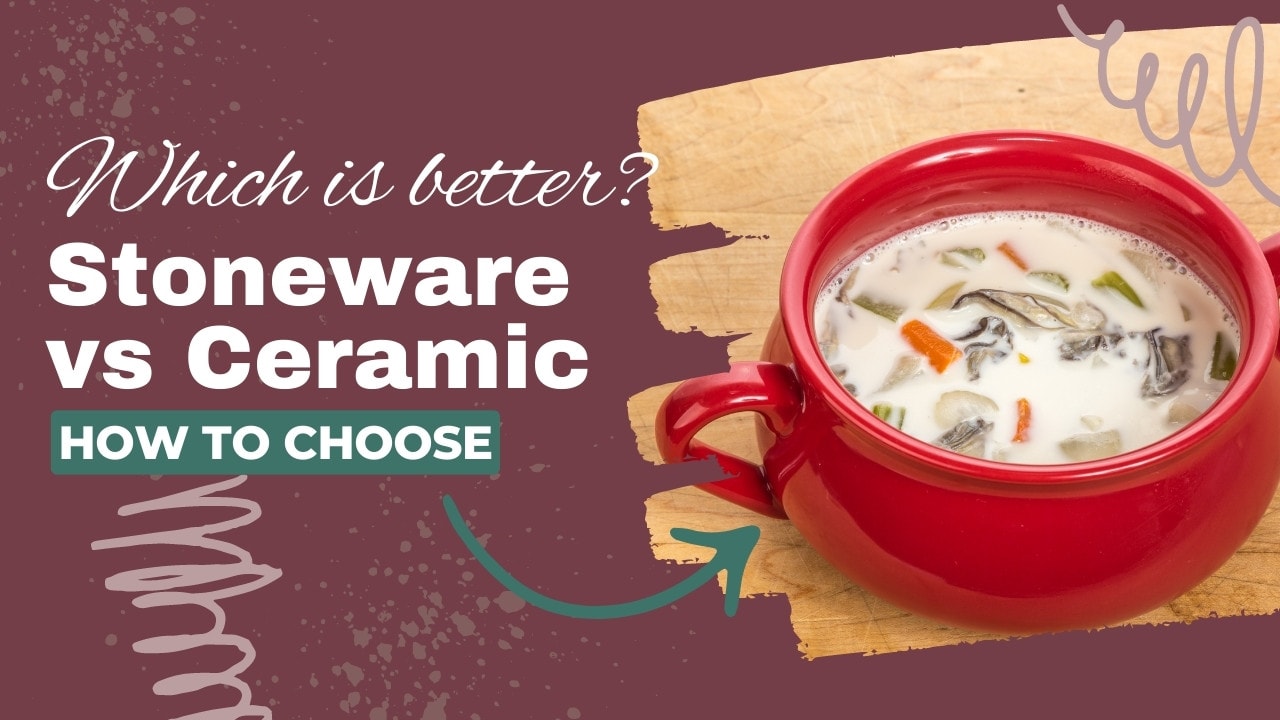All stoneware is ceramic. Not all ceramic is stoneware. Ceramic, defined as vessels made from fired clay, also includes the categories of earthenware, porcelain, and bone china.
Most “ceramic” cookware sold today isn’t made of much, if any, clay. (It’s usually aluminum with a silica coating.)
Clear as mud?
(Pun totally intended.)
Don’t worry, we’ll clear up the confusion quickly in this article. We’ll cover:
What is the Difference Between Stoneware and Ceramic?
Stoneware refers to cookware or pottery made of nonporous clay that is fired at high temperatures until it becomes vitrified – or glasslike. It remains opaque in color and is usually glazed.
Ceramic as a broad term refers to any clay vessel or tile that’s been hardened by heat. There are different types of ceramic cookware and dinnerware – including your grandmother’s fine china.
However, in modern terms, “ceramic” pots and pans or “ceramic coated” cookware are pans with metal (aluminum, copper, and/or steel) cores with a “sol-gel” coating. Sol-gel is a mix of silica and metal oxides that may include granite, titanium, or diamond, depending on the manufacturer.
Staub and Le Creuset make popular stoneware baking pans, Dutch ovens, and casserole dishes.
At present, Xtrema is the only manufacturer (that I know of) of pure clay-based ceramic pots and pans.
- Designed by Staub in France.
- Vitreous glass porcelain-enamel finish
- highly scratch resistant
- retain heat exceptionally well
- Microwave, freezer, broiler, and oven safe up to 572°F
- Dishwasher safe
What is Stoneware?
Stoneware is a versatile non-porous ceramic cookware or dinnerware. It’s often thicker than other ceramics or porcelain. Stoneware is made from a non-porous clay fired at a high temperature of about 2150°F to 2400°F. This makes it more durable with better heat retention than other ceramics.
Usually with a beautiful stone-like finish, you’ll also find it available in multiple colors to match your kitchen. It’s heavy, chip-resistant, watertight, and cooks well on both the stovetop and in the oven.
Stoneware Uses
Not just for your kitchen, stoneware can be woven through your home to tie everything together. Denby Pottery has beautiful stoneware-like home décor to match their cookware and tableware.
The tableware itself can be home decor. Simply elegant tableware like the Fable Home Collection is organically shaped and hand finished in Portugal.
Let’s not forget your kitchen. Turn dinner into a dream with Le Creuset fine enameled stoneware Dutch ovens and cookware designed by French artisans that come in a huge range of colors. For over a century leading brands like this have turned everyday cookware and tableware into durable homelegance.
- Excellent heat distribution
- Superior heat retention
- Nonporous, non-reactive, scratch-resistant, and resists stains and flavor absorption
- Smooth interior enamel
- Unmatched thermal resistance
- Safe for freezer, oven, microwave, broiler, dishwasher and metal utensils
Stoneware in History
It all started back in the Shang Dynasty as early as 1400 BCE when stoneware was first recorded. Emperors and the noble classes prized its durability and elegance. Stoneware and ceramics are the oldest cookware and art forms in the world.
Although stoneware and ceramics are made of natural materials, their sealing under intense heat makes them waterproof and very strong. This is evidenced by 4,000-year-old stonework pottery found in Crete, and by Central America’s ceramic statue of a seated bearded Mayan man dating back to the civilization’s late Classic Period c. 600-900 A.D.
Is Stoneware Safe to Cook With?
Yes. Stoneware is safe to cook with. Due to the high temperatures in which it is made, it is sealed and watertight. In the past, heavy metals like lead or cadmium were known to contaminate stoneware, but modern manufacturing processes make that much less likely. The main thing to be careful of is thermal shock.
Avoid rapid temperature changes. If you want to use stoneware to cook something large and frozen like a chicken or a roast then you’ll need to thaw the meat before placing it in the pan in the oven.
Additionally, it’s best NOT to put any empty stoneware in the oven to preheat. This may cause it to crack. Instead, put a room-temperature pan with room-temperature or cool (not frozen) contents into a fully preheated oven.
Cleaning, Seasoning, and Care of Stoneware
The best way to make your cleaning life easier is to season your stoneware. Not only does it make every dish more delicious but it preserves the longevity of your cookware.
Seasoning means cleaning after each use without soap. The natural oils of food will soak into your stoneware making it both stick and corrosion-resistant in a natural way.
Having said that, detergent can have its place. Cleaning when there is hard build-up can be difficult if you don’t use detergent.
Try not to use citrus-based cleaners, though, as the acid can damage glazing on your stoneware.
If you are seasoning your stoneware and trying to avoid detergent, let it soak for half an hour. Then use nylon or plastic spatulas to scrape off the build-up and get into those hard-to-reach corners.
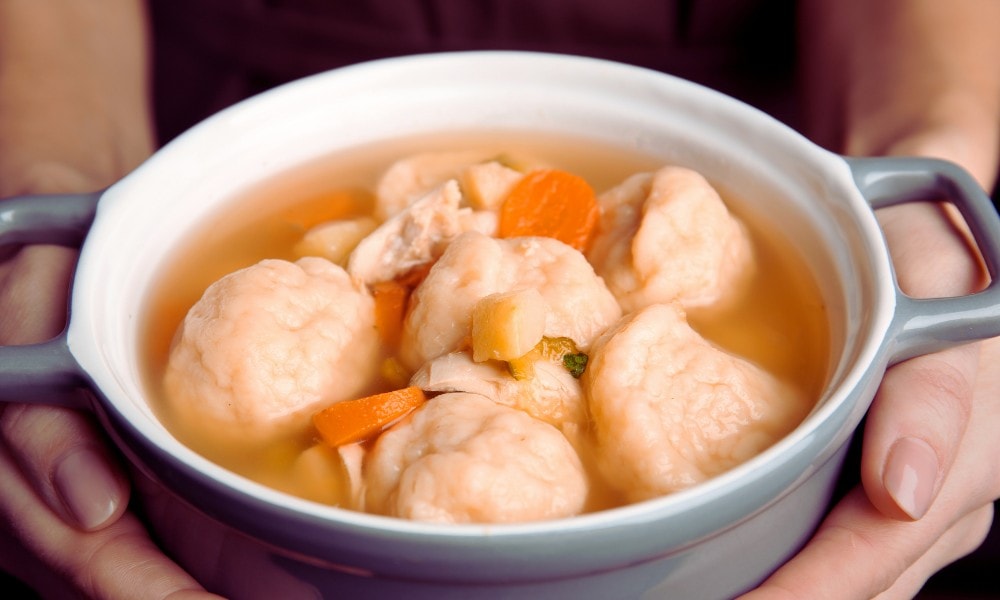
Stoneware is refrigerator, oven, and stovetop safe. Just check with the manufacturer’s notes and make sure the stoneware is at room temperature before big temperature fluctuations of hot or cold.
It’s best to avoid the microwave unless your vessel is marked microwave-safe. Plus, some coated or glazed stoneware may have trace elements that react with or absorb microwave energy, risking damage.
What is Ceramic?
Ceramics is a broad category of pottery made from clay or earthen materials. Stoneware is also included in this category but with one big difference. Stoneware is made from non-porous clay. The three types of ceramics we will discuss below are made from porous clay.
Besides stoneware, there are three main types of ceramic, each more refined than the last: earthenware, porcelain, and the finest of all, bone china.
Remember, however, Ceramic coated pots and pans are different; they are made from a base of durable metal and finished with a coating of glazed, kiln-baked clay. The ceramic coating makes these types of pots and pans naturally non-stick, generally non-toxic, and easy to clean.
Earthenware
Earthenware often contains iron, so it’s able to set at lower temperatures. It’s usually fired between 1745°F and 2012°F. It’s brittle and porous, allowing water and air to pass through.
Terracotta is a great example of earthenware that usually holds its natural color and needs to be sealed before use to prevent leakage.
Porcelain
Porcelain is fired at very high temperatures of 2381°F to 2455°F, resulting in a shiny, almost glasslike, extremely hard material. It’s often white or off-white and translucent in appearance, plus watertight and very durable.
This makes them excellent for dinnerware and home décor. Porcelain tiles are denser and more durable than ceramic which is perfect for kitchens, splash backs, bathrooms, or for an elegant design to your house. Florim is a great example of lovely Porcelain tile.
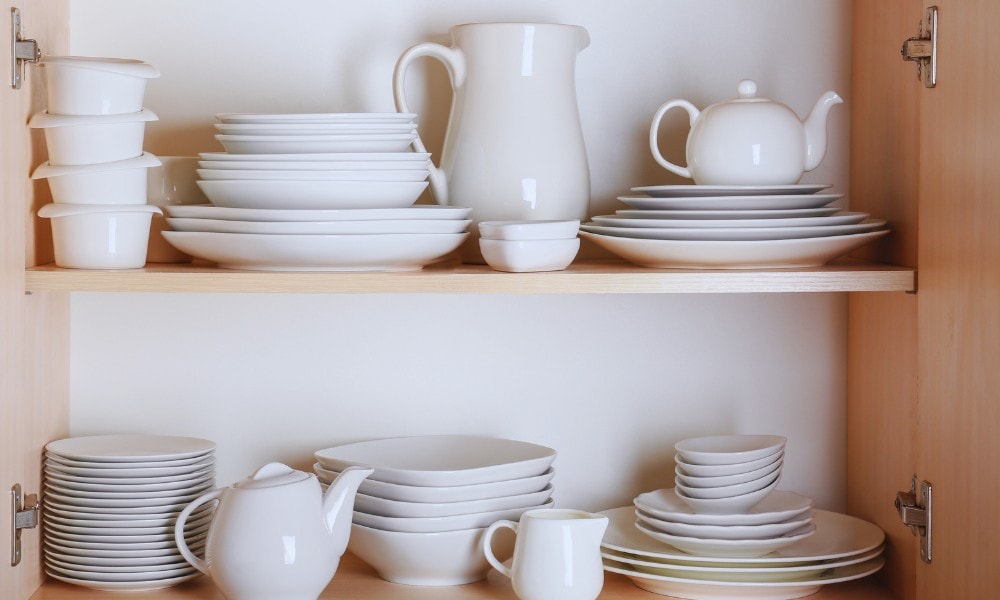
Bone China
Bone china, or fine china, gets its name from its Chinese origins around 1600 BC. The term bone china is a descriptor used because ground animal bone was added to the clay to create an even more durable material.
Fine china is the epitome of elegance in the ceramics world and is made into everything from figurines and table adornments to refined dinnerware used by Kings and Queens.
Brands like Noritake, Royal Doulton, and Wedgwood are classically timeless, known as generational pieces because they are passed down from generation to generation.
- Superior strength
- Elegant gold banding
- Packaged in a beautiful Royal Albert presentation box
- Hand wash recommended.
- Not for use in Microwave
Ceramics Throughout History
Earthenware ceramics and pottery are the oldest cookware and cooking aids in the world. As popular now as they were thousands of years ago, they hold great cultural and historic significance.
To this day Japanese celadon ceramic pottery is so highly prized it is repaired with gold in an art form known as Kintsugi when chipped or broken. Even more beautiful when repaired, pieces are cherished by families and passed from generation to generation.
For centuries Mexico’s Day of the Dead has been celebrated with special 2,500-year-old “pottery of the night”. An Oaxacan village, San Bartolo Coyotepec, whose legends say the highly carbonated black clay is blessed, produces barro negro, a beautiful black clay pottery.
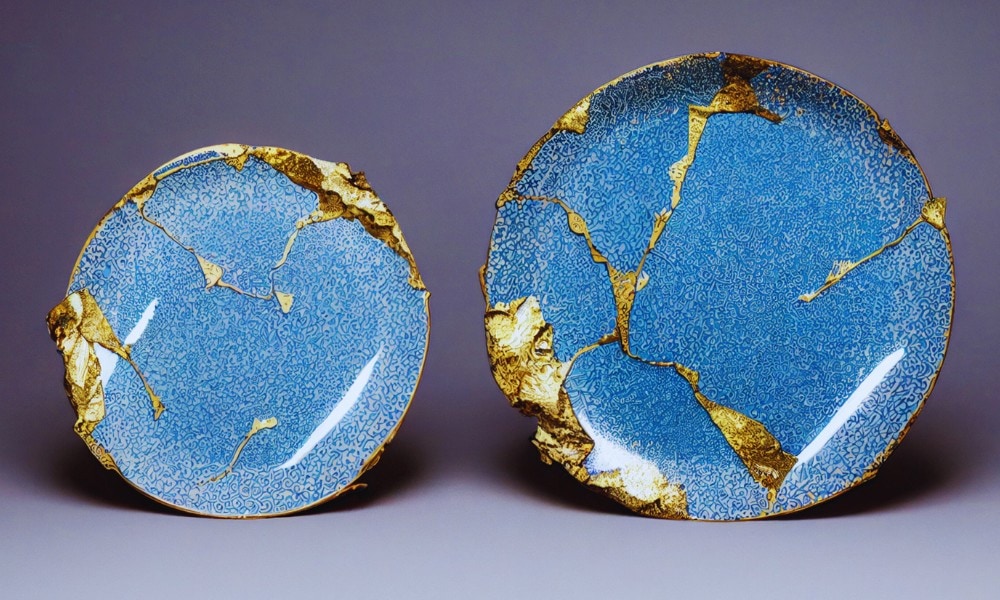
Artifacts of sites and civilizations thought lost to time, stoneware, pottery, and ceramics are the greatest preservers of a civilization’s culture and history. Because of its durability, once fired and sealed, it is a popular medium in mosaics and art in many cultures as well.
Are Ceramics Safe to Cook With?
Most pure ceramic vessels are not designed for high-heat cooking, or cooking at all. (Don’t put that China plate in the oven!) Xtrema brand is a notable exception, however, with pure ceramic pots and pans.
If you’re talking about the safety of ceramic-coated metal pans, though, that’s a different question.
Most ceramic-coated pans are generally safe to cook with and have fewer health risks than Teflon-coated pans.
Manufacturers are listening to consumer demand for PFAS, PFOA, and PTFE (all polytetrafluoroethylene) free products when purchasing ceramic non-stick cookware.
To avoid any chance of potential hazards or chemicals leaching, purchase brands that include PFAS, PFOA, or PTFE-free in the purchase description.
Amazon’s Choice ceramic cookware like GreenPan Rio clearly states that it has a sol-gel coating over an aluminum base, which is PFAS-free.
However, it’s still better to cook with ceramics at a low to medium heat range. When heated at 500°F or higher, the sol-gel coating can begin to lose its non-stick abilities.
Always read your cookware manufacturers’ specifications which you find on Amazon if you scroll to the bottom of the page.
To avoid this, purchase quality ceramic cookware like Caraway which is stovetop and oven safe up to 550° F.
Set Includes: 10.5″ frying pan, 3 qt. saucepan with cover, 6.5 qt. dutch oven with cover, 4.5 qt. sauté pan with cover, 4 pan racks, and a lid holder with hooks
This set combines beauty and functionality, which matches well with a glass stove’s sleek design. The bottom is completely flat, so you’ll get even heating. The entire set weighs 32 pounds, which is within the range that a glass stove can tolerate. The fry pan weighs 1.68 pounds, and the saucepan weighs 2.85 pounds.
Since the set is ceramic-coated, be careful with the temperature; glass stoves can get hot enough to damage the coating. Thankfully, the pan heats so quickly you only need to use medium heat for most applications.
Care and Cleaning of Ceramic Cookware
The best care and cleaning practices of sol-gel (ceramic) coated cookware are to:
If food starts to stick to your ceramic pan, then add 1 cup of vinegar with 2 tablespoons of baking soda and let it soak for half an hour. This will remove any food buildup, for stuck-on food to be easily wiped away making your pan non-stick again.
How to Choose Between Stoneware and Ceramic?
As a general rule, ceramic cookware is not 100% kiln-baked clay. Rather it’s made from a base of durable metal with a ceramic glazed coating. This ceramic coating makes it naturally non-toxic, non-stick, and easy to clean.
There is ceramic cookware out there that is 100% clay without a metal base, but the most common ceramic cookware you will find has a metal base.
Xtrema pure ceramic cookware is handmade not machine-made with 100% natural clay. They proudly state “ a proprietary blend of natural minerals, clay, and water. No metals, glues, or polymers, ever.”
Which is Better?
To properly compare the differences between stoneware and ceramic cookware we’re going to cover several criteria, such as durability, maintenance, versatility, aesthetics, and cost. So, let’s dive in.
Durability
Stoneware is more resistant to chipping and cracking than ceramics such as porcelain or china. It is fired at a higher temperature and often enhanced with extra glass material. This makes it suitable for uses, like baking, that you would never use china for.
Maintenance
Stoneware that’s seasoned develops a nonstick surface that is very easy to clean. Some manufacturers advertise that their stoneware pans can go in the dishwasher, but this may reduce the seasoning. They are heavy and hard to handle when washing, but avoiding the dishwasher will increase the lifespan of your pans.
Porcelain and earthenware are hand wash-only.
Ceramic-coated metal pans often claim to be dishwasher safe, but will last longer if they are hand washed.
Versatility
Stoneware is oven safe but not for use on the stovetop; ceramics vary widely in their versatility. Some ceramics are oven safe and others are not. The only pure ceramic pans you can use on the stove are
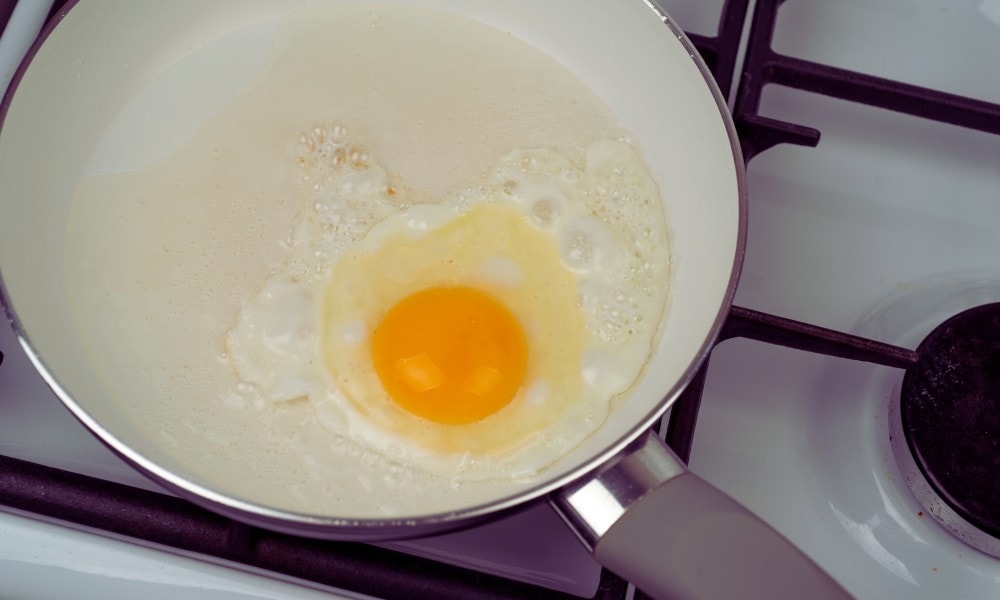
Ceramic-coated aluminum pans are fairly versatile, especially if you get high-grade ones that can withstand oven temperatures.
Aesthetics
Ceramic usually has more of a refined look while stoneware has a rustic and earthy look. In tableware and dining ware, ceramics have a higher decorative and polished look. (But earthenware is a type of ceramic that may be an exception.)
Cost
For everyday use, stoneware is a more affordable option than either porcelain or bone china. Earthenware is the cheapest of the 100% clay ceramics, but also the least durable as it easily chips, cracks, and breaks.
Sol-gel-coated ceramic pans are relatively affordable, depending on the brand you choose.
Which Is the Best Ceramic for Me?
To choose the best type of ceramics for your home, there are a few things to consider. Such as cooking style, frequency, method of cooking, budget, and personal taste.
Cooking Style
Which cooking method do you use most? Stovetops, ovens, or microwaves are the most common, so – sorry outdoor cooks and campers – we’ll stick to these in our discussion.
If you cook daily, often and use different methods, stoneware might be a better option than ceramic due to its durability and adaptability being compatible with all three cooking methods. If you mainly use the stovetop, then ceramic is a great choice with a wide range.
Budget and Lifestyle
Budget plays a big role in the decision of which ceramic is best for you. If you want to invest in generational pieces of high-quality and durable pottery that you can pass down to your family, porcelain or bone china are worth the splurge.
If you’re a passionate home cook after durable but affordable cookware that lasts but will need to be replaced every now and then, it’s stoneware or ceramic cookware that you want.
True unglazed earthenware pots are usually only available from traditional artisan sources. Modern manufacturers create stoneware or ceramics.
Personal taste and décor
When it comes to ceramics, the world is your oyster. Or should I say rainbow? Nowadays ceramics are available in a wide range of colors to suit any home décor.
From elegant eggshell bone china fit for state dinners at the White House to a more natural earthy and cozy look for your kitchen and dining room, ceramics have it all.
Stoneware will suit a natural style with a touch of simple elegance. If you prefer a sophisticated and elegant look, porcelain and china are the ones to watch.
Stoneware vs Ceramic FAQ’s
How do I tell the difference between stoneware and ceramic by looking at them?
Ceramic looks thinner, glossier and more translucent whereas stoneware looks thicker with a more stone-like appearance and is more opaque.
How do I season stoneware before using it for the first time?
Cooking or baking high-fat food will help season quickly. Afterwards greasing is not needed as each time the natural oils season it a little more. An excellent choice for this is cookies! Avoid using aerosol sprays, because they create an oxidized grease layer that burns and is nearly impossible to remove.
How can I avoid cracking or breaking stoneware when heating or cooling it?
Avoid big temperature ranges which result in thermal shock. Don’t cook large items like a chicken or roast from frozen; make sure they are thawed first. Also, don’t preheat empty cookware then add cold ingredients. Just place everything in the pot together at room temperature and then add to a fully heated oven.
How to test if stoneware or ceramic contains lead or other harmful substances?
You can buy lead testing kits for under $17 on Amazon that are suitable for ceramics, dishes, and cookware.
Best Stoneware and Ceramic Baking Dishes
As a general rule, stoneware cannot be used on the stovetop. However, brands like Staub and Le Creuset make some beautiful and versatile baking dishes from stone.
As mentioned above, Xtrema is your only option for fired clay pots and pans that are stovetop compatible. You’ll definitely have to try their pure ceramic fry pan!
Staub Ceramic Baking Dish Set
This beautiful three-pan set costs around $100 and is worth the investment if you’re convinced that stoneware will be your baking go-to.
- Vitreous glass porcelain-enamel finish.
- Highly scratch resistant.
- Stoneware will not absorb moisture resistant
- Heat gently, and retains heat exceptionally
- Microwave, freezer, broiler, and oven safe up to 572°F.
- Dishwasher safe
Rossallini Stoneware Casserole Dish with Lid
To say that a ceramic dish is beautiful is kind of redundant, but I can’t help it. This carefully crafted casserole dish with its ceramic lid has such elegant lines that it will catch everyone’s attention at your next dinner party. Its gorgeous finish is available in several colors. It’s pricey, but it’s so durable – able to withstand -65°F and up to 500°F – that it could become an heirloom piece.
Malacasa Rectangular Ceramic Casserole Dish
This Malacasa casserole dish is a much less expensive alternative to the Rosallini dish above. It’s of a similar size with a ceramic lid and costs less than half the price. The drawbacks are that it only comes in one color and that the manufacturer probably has different quality control standards than higher-end brands.
Best Ceramic Coated Metal Pans
These “ceramic” or “granite” nonstick pans have steel or aluminum cores and nonstick coatings made of silica infused with minerals and metals.
GreenPan Chatham Midnight Nonstick 11-Piece Set
Eye-catching, isn’t it? This ceramic nonstick cookware set is not only on the eye, but on the wallet (at least with the current sale). It includes a variety of pans with tough, non-toxic nonstick coatings that are oven safe up to 600°F, plus glass lids.
GreenPan makes bold claims about their diamond-reinforced “non-toxic” coating, saying it is free of a variety of potentially harmful elements like PFAS and lead. The cores are made of hard-anodized aluminum – so they’re 30% stronger than stainless steel and less likely to leach aluminum if the coating gets scratched than regular aluminum pans.
Bloomhouse Oprah’s Favorite Things 12 Piece Pink Cookware
Lovely, but with quite a different aesthetic than the GreenPan set above, is Bloomhouse’s 12pc ceramic cookware set. Although they do have aluminum cores, the emphasis is on the ceramic in these pans, with white ceramic interiors and colored enamel exteriors. Even the strainer in this set is made of ceramic.
Best Stoneware and Ceramic Mugs
When it comes to a morning cuppa most of us want a mug – not a delicate tea cup that only holds a few mouthfuls – and a large mug at that. These great options are large enough for coffee, tea, soup, hot chocolate, or a perfect cappuccino. They come In a variety of elegant colors and are dishwasher and microwave safe. My favorites include:
Best Stoneware and Ceramic Homeware and Vases
With vases and accessories, you can showcase the natural beauty of stoneware in your home or office. Here are some I’d recommend:
Sullivan’s Small White Ceramic Vase set – This 3 piece set will bring a touch of cottage charm to any location.
For a more classic look try Willowy – a large porcelain vase which is perfect for dried or fresh floral arrangements, on the floor or table.
If you like the ceramic finish but prefer a modern design, then Fortivo and Levvold are both great options.
Bone china and fine china vases and home décor can cost hundreds or even thousands, especially if they are handcrafted. But there are some affordable options out there like Dahlia Store’s Birds in Peony Bush.
Conclusion
Stoneware is a subcategory of fired clay vessels, aka, ceramics. Stoneware casserole dishes can be used in the oven. Ceramic-coated metal cookware is lightweight and can be used on the stovetop, but the nonstick coating might only last a couple of years.
However, 100% natural ceramic cookware like Xtrema is designed as a generational piece that will be handed down to future generations so it is worth considering the investment.
However, most pure ceramic (including fine china) is better suited to dinnerware and decorative tableware.
There are options for every budget, home décor, and cooking preference. If you’d like to learn more about stoneware and ceramics, how they are made, and their history, the American Ceramic Society is a good resource.

